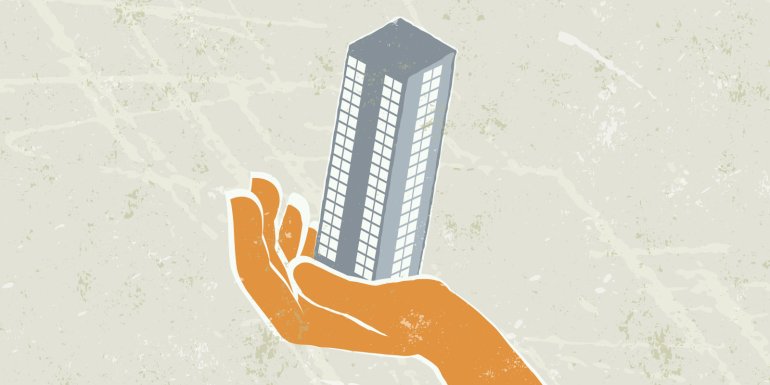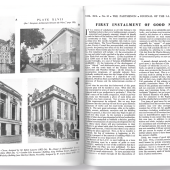Carrying building liability

Robert Ryall, Partner and Joint Head of the Commercial Litigation & Dispute Resolution Team, and Helen Young, Associate, both SA Law, discuss the BSA from a legal standpoint.
On 28 April 2022 the Building Safety Act 2022 (England) (BSA) received Royal Ascent, with some sections in force from June 2022 (and all sections in force by October 2024). The BSA aimed to address perceived shortcomings in regulating building safety identified following the Grenfell Tower fire in 2017. So how has the Act been received in the construction sector?
The BSA introduced a multitude of legal requirements, which are having and are likely to have a significant impact on consultants and contractors involved in building and renovating residential buildings. It also has the potential for an increase in claims. Many in the industry also remain confused about the BSA’s provisions and the day-to-day effect it has on their role.
A lot of the issues give rise to problems that have never had to be considered previously. The BSA has caused confusion (for example, with the term ‘buildings in scope’) and, at last count, the government has already introduced four sets of amendments to regulations brought in as part of the implementation of the BSA. There are other draft amendment regulations with parliament intended to clarify some of the various issues.
Undoubtedly, further regulations and amendments to existing regulations will be passed as the practical implications of the BSA come to light. Furthermore, guidance will become available as the judiciary considers cases and interprets the legislation – but for now everyone needs to take stock of the key changes in the act and how they impact business practices.
Never considered before
Lord Justice Coulson, Judge at the Technology and Construction Court, commented that Section 135 of the BSA (about the extended time limits to bring claims under the Defective Premises Act) “is novel and the issues to which it gives rise have never been considered before”. The true impact of the BSA is slowly filtering through, which is highlighting the need for proper guidance from the government and the courts.
The main issues with the BSA are that it requires developers to pay to fix buildings to rectify safety defects, regardless of whether they still own the building or not. It has created new causes of action to achieve this, creating liability for “cladding products” and “construction products”.
It has also given the High Court the power to make Building Liability Orders that enable the courts to track back through layers of legal ownership to hold parent or shell companies responsible for the default of related businesses, even if these are no longer operating as going concerns. Additionally, it has extended liability periods and how long a potential claimant has to bring a claim for defective or unsafe premises under the Defective Premises Act 1972, in some cases allowing 15 or 30 years when it used to be six years. This is designed to ensure property owners have recourse to cover expensive remedial works, but in the short term may not address safety failings. We anticipate that there will be an increase in claims as a result of the limitation provisions the BSA contains, as well as potential pushback from insurers.
Another significant issue is that there is a real focus in the BSA on the competence of contractors and designers, to the extent that the professions generally consider that it goes far beyond the Construction (Design and Management) Regulations 2015. If you are involved in the design and construction process then you will be classed as a “dutyholder”, and there is a rigorous new regime of legal responsibilities. A client employing you has to be satisfied that you are competent to do the work. This is all backed by a criminal regime that will be enforced by the GB Health and Safety Executive (HSE). Pre-contractual negotiations and tendering processes may be more onerous, with potential clients requiring a wealth of information to satisfy themselves that you are up to the job. What comes from the BSA is the absolute requirement to ensure the necessary competencies, but it is still unclear what this actually means in practice and what the expectations will be to achieve the requisite competency levels.
One of the ways that clients, principal contractors, principal designers and those with maintenance responsibilities can prove competence is by applying via CABE for the Higher-Risk Buildings Registration (see P37 of the September 2023 issue of Building Engineer).
The other main issue is that the most stringent requirements apply to only the higher-risk buildings (namely those buildings at least seven storeys high or 18m) and there are a very significant number of buildings that fall outside of those parameters. While the BSA does address issues for buildings 11-18m high (and between five and seven storeys), the safety of those out-of-scope buildings has not been addressed yet, and the concern is that old practices may continue.
Facing the issues
So how can construction professionals mitigate these issues? We would advise professionals to be prepared and ensure they are on top of any deadlines in the BSA that will affect them. Consider using technology to help you with the Golden Thread requirements and to keep clear records – ensure you check your document retention policies with the new limitation periods in mind. Check your insurance policies and the scope of them, particularly if you are a developer. Building Liability Orders and the new provisions in relation to limitation periods may be difficult to insure, but could have a severe and far-reaching impact on future liabilities. For contractors, take a look at your CPD record and how you manage CPD requirements.
For more, visit salaw.com
For further discussion of the BSA’s implications, see page 36
CPD
Technology and practice within the sector are constantly changing, so sustaining your professional competence is fundamental to your role. This will soon be supported by legislation in England and Wales, where building inspector registration and the dutyholding regulations all require building engineers to demonstrate how they manage and maintain competence.
CABE considers the maintaining of skills, experience and knowledge as a priority. Consequently, members are asked to plan their activities and document the CPD they have completed.
CABE has changed its CPD year to fit with the calendar year and this will begin January 2024. The 22/23 audit year will conclude in December 2023, so any activities taken between September and December 2023 need to be logged as CPD 22/23. All Chartered members should have their 35 hours uploaded by 31 December 2023.
For more information, visit bit.ly/Cbuilde_CPD







